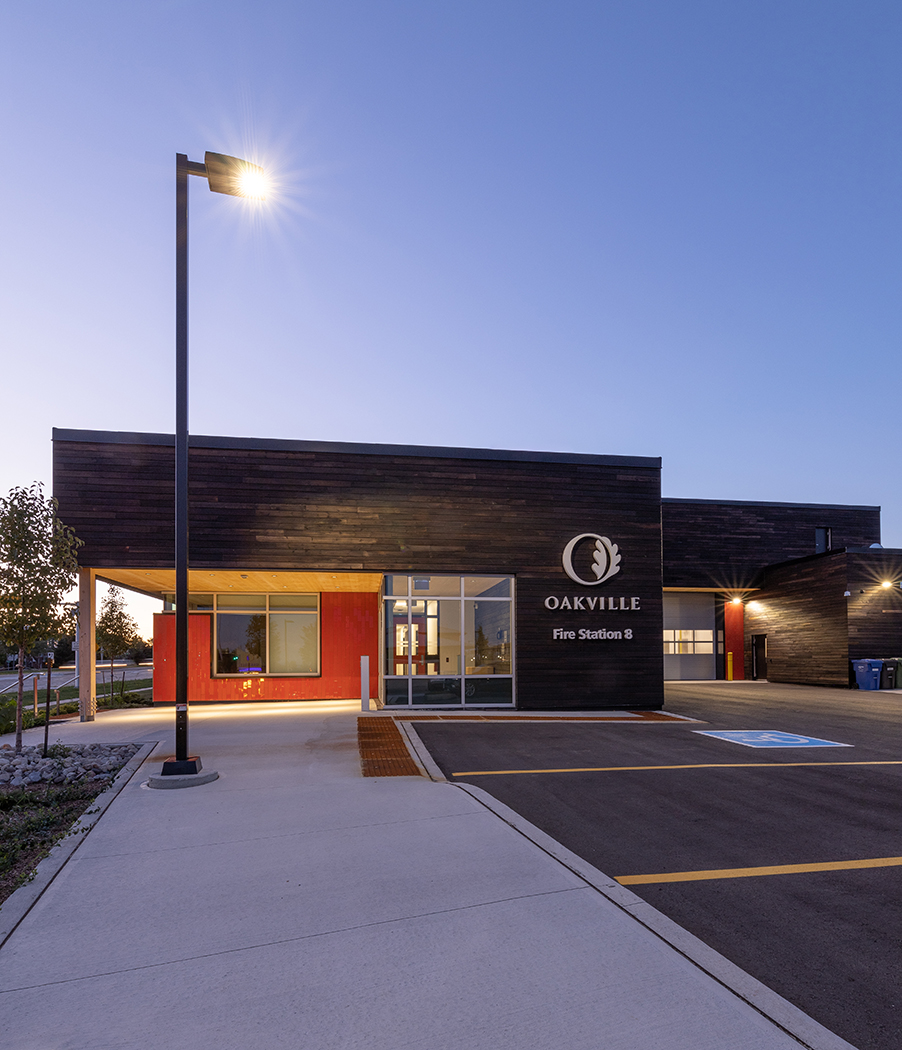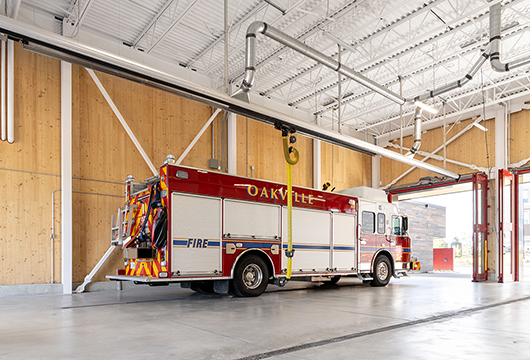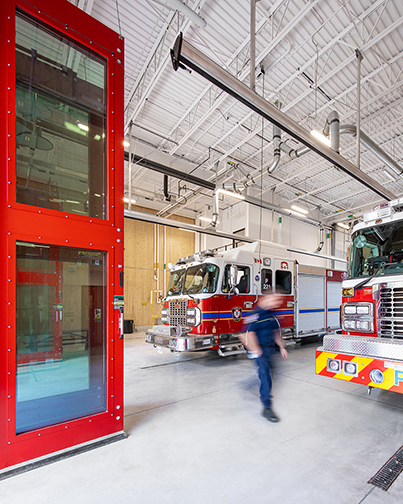Service: Information and Communications Technology
SickKids Hospital
Digital Strategy and ICAT RoadmapProject Horizon is a massive campus redevelopment that will transform the experience of patients and healthcare professionals, and enable the state-of-the-art healthcare facility to embrace new technologies and processes.
Angus Connect was engaged by the world-renowned paediatric clinical and research hospital to develop a comprehensive digital strategy and ICAT roadmap to support Project Horizon - New Patient Care Tower. This new facility is expected to be 22 stories on the existing SickKids campus in downtown Toronto, and to be integrated with the existing facilities.
Angus Connect is developing the Digital Strategy, Vision and Guiding Principles in accordance with the Project Horizon Vision and SickKids’ Strategic Plan. This will culminate in an ICAT Roadmap, which will inform SickKids of current and upcoming technologies to support the delivery of patient care integrated with research and learning. Once complete, the Roadmap will include a high-level Implementation Plan and Budget for incorporation into SickKids’ Project Horizon Stage 2: Functional Program Submission, and to form the basis of future stages of Project Horizon. The outputs of our Design Program will inform the specifications for the project.
Project Horizon is a multi-year project with the objective to transform SickKids’ physical facilities in order to support the future delivery of paediatric care and address myriad infrastructure deficiencies and limitations that impact quality and safety. The project will consist of the demolition of three buildings and the construction of two new buildings in a complex sequence that will span more than a decade before patients can be accommodated in the new facilities. With extensive experience delivering ICAT digital strategic plans for hospitals across Canada, our team is collaborating closely with SickKids to deep dive into the future of healthcare delivery and understanding their organizational needs today and those anticipated for the future in order to deliver a comprehensive and flexible ICAT roadmap to support Project Horizon. The team is also able to draw on HH Angus’ decades-long experience with large P3 healthcare design and construction projects.
SERVICES
ICAT strategic visioning and planning
PROJECT FEATURES
Size: 22 stories on existing downtown campus | Status: Ongoing
LOCATION
Toronto, Ontario
KEY SCOPE ELEMENTS
Comprehensive digital strategy and ICAT roadmap | Integration with existing facilities | High-level implementation plan and budget | Functional Program Submission | Jurisdictional Scan

Visioning for the future
Angus Connect is providing SickKids with a Jurisdictional Scan of peer organizations from countries around the globe. We worked with our network of global partners (Subject Matter Experts) to understand and identify leading organizations in particular technologies and to make contacts. A market scan of the current and emerging technologies that will change the way healthcare is delivered in 10, 20 and 30 years was also developed as the basis for a Visioning Session with the Leadership Group. This includes concepts such as virtual care, artificial intelligence, robotics, machine learning and 4D printing.
St. Michael’s Hospital
Walter and Maria Schroeder Brain and Heart Centre
“The catheterization lab's capacity is unparalleled and will enable us to make use of state-of-the-art equipment to care for our patients.”
Kim Boswell, Clinical Leader Manager Cardiac Catheterization Labs and Cardiac Arrhythmia Service, SMH
With the Walter and Maria Schroeder Brain & Heart Centre, St. Michael’s Hospital is creating a hub to bring together the world’s best brain and heart specialists, a group of multi-disciplinary experts in engineering and the clinical neurosciences, to develop new therapies for brain-related disorders, such as Alzheimer’s, Lou Gehrig disease (ALS) and Parkinson’s. The new centre will enable patients to be diagnosed, tested and treated in a seamless approach in a single location.
The new catheterization lab, where diagnostic imaging procedures take place to diagnose and treat cardiac issues, is now the largest of its kind inside St. Michael’s, expanding by almost a third of its previous size. The new robotic C-arm will set new benchmarks for precision during various diagnostic imaging procedures.
HH Angus was engaged to provide mechanical and engineering services; lighting design; IT, security, audio visual and communications consulting; and commissioning. Our project scope covered the renovation of an existing Cath Lab, along with associated equipment and control rooms, in order to accommodate a larger footprint and new state-of-the-art medical and imaging equipment.
The project design was future proofed with the expanded Cath lab providing increased capacity for cardiac procedures, thanks to a requirement to design the procedure area to be flexible enough for use as an Operating Room in future. It also includes state-of-the-art audio visual capabilities, with live data streams displayed on electronic screens throughout the room. Future capabilities include extensive video and audio feeds from within the room, as well as the ability to videoconference and live-stream procedures to locations both within and outside St. Michael’s. This will facilitate education, research and external consults.
Upgrades included: medical gas system and alarm replacement, including the installation of an articulated service boom; eventual conversion from passive to active scavenging system; ventilation system; and two new neuro interventional bi-plane suites, enabling image-guided and minimally-invasive procedures.
Challenges met by our project team include:
- Designing the space to meet a Hybrid OR environment, including supplying 20 air changes per hour above the patient care area with limited ceiling space
- Creating flexible ventilation design to allow future connection to a new air handling system, without causing major shutdowns to or rework of the existing space
- As a partial solution to #1, installing a combined lighting and air supply product (EH Price Ultrasuite), which had not yet been implemented anywhere in Canada, and ensuring all local code requirements were met.
- Coordinating the complex video requirements of multiple specialized medical systems in order to route diagnostic-quality video and audio feeds appropriately.
Read about other projects at St. Michael’s Hospital
Barlo MS Centre
Li Ka Shing Knowledge Institute
Photo courtesy of Unity Health
SERVICES
Mechanical Engineering | Electrical Engineering | Lighting Design | Security | Communications | Audio Visual | IMIT | Commissioning
PROJECT FEATURES
Status: Completion 2020 | Future-proofed design with flexibility to permit re-purposing of procedure area
LOCATION
Toronto, Ontario
KEY SCOPE ELEMENTS
Cardiac catheterization lab | Hybrid OR environment
Town of Oakville
Fire Hall #8
This project was designed and constructed under the Integrated Project Delivery procurement model, a methodology that, in our experience, provides excellent results for our clients, as well as fostering greater collaboration within the project team.
Oakville’s new fire station and amenities have been designed to serve a growing population. LEED Silver certified, the 1.5 storey facility was almost fully constructed from glue laminated and cross laminated timber (CLT). CLT is a relatively new construction material in North America; CLT panels/walls are fabricated off site, where all M&E openings and penetrations are cut out, and then subsequently assembled on site. This approach required extremely close coordination between the structural designers and the M&E designers since, unlike drywall, wood openings cannot be adjusted once cut. The modular construction approach also helped meet the aggressive schedule for this project.
HH Angus’ mechanical scope included variable refrigerant flow, energy recovery ventilators, infrared tube heaters, and vehicle exhaust system. Electrical systems include natural gas backup generator, daylight harvesting sensors, provision for solar PV, CCTV and card access, and fire locution (radio system for 911 dispatch). Special provisions were made to allow speakers to be installed strategically throughout the building to support the locution/fire alerting system, with additional provisions for the radio antenna. In 2021, the project was honoured with the Toronto IES Illumination Section Award.
The fire hall floor plan consists of three fire truck bays - two drive-through and one back-in bay, gymnasium, dormitory, kitchen, offices, meeting rooms, IT room, and many specialized service spaces. Fire Hall #8 is designated as a “post disaster building”; hence, the M&E systems are very robust.
Perhaps ironically, the new fire station is clad in charred wood. Shou Sugi Ban charred siding, made from logs reclaimed from Ontario and Quebec waterways, offers many safety and operational advantages: it is ultra-low maintenance, naturally resistant to insects, moisture and rot, has proven fire resistance qualities, and is sun and water repellent. At end of life, the siding can be disposed of safely, without environmental damage.
The project team, under the IPD procurement model, included the Town of Oakville - Owner | Chandos - Builder/IPD Lead | LETT - Architect | HH Angus - Mechanical and Electrical Engineer | Bering Mechanical - Mechanical Contractor | Plan Group - Electrical Contractor | Gillam Group - Construction Management | Element 5 - Wood Structure Fabrication | LEA Consulting - Structural Engineer | Tresman Steel - Steel Structure Contractor | Groundworks Construction - Early Works and Landscape | Fluent - LEED Consultant | Husson - Stormwater Management.
Construction time-lapse: https://youtu.be/2dydglnYkRM
SERVICES
Mechanical Engineering | Electrical Engineering | Lighting Design | Communications Design | Security Design
PROJECT FEATURES
Status: Completion 2020 | 11,500 ft2 | Integrated Project Delivery | Mass timber construction | LEED Silver certified| Designated 'post disaster' building
LOCATION
Oakville, Ontario
KEY SCOPE ELEMENTS
Net Zero provisions for future conversion, with high efficiency M&E | Shou Sugi Ban charred wood cladding | Provision for future photo voltaic installation | locution/fire alerting system

Net Zero Conversion
Highly efficient M&E systems provide for future Net Zero conversion. The Fire Hall is designed to accommodate a 40kW Solar PV system to offset and displace energy usage.
Site Challenges
The Fire Hall was built adjacent to an existing EMS Station and shares the road entrance and utilities. This presented a challenge in planning for construction, service entrances and operations. The team had to ensure that the Fire Hall does not impede EMS' emergency response process.



Infrastructure Ontario/Metrolinx
Eglinton Crosstown Light Rail Transit
This project is the largest transit expansion in Toronto’s history, and one of the largest P3 projects in North America. When complete, it will move people 60% faster than existing bus service and will accommodate ten times as many passengers.
The new light rail transit line runs along Eglinton Avenue between Mount Dennis Station (Weston Road) in the west and Kennedy Station in the east. The 19-kilometre corridor includes a 10-kilometre underground portion between Keele Street and Laird Drive. The line features 25 stations and stops, with links to bus routes, 3 subway stations and various GO Transit lines. HH Angus is providing mechanical and electrical consulting engineering for three stations – Mt. Pleasant, Leaside (Bayview) and Laird.
HH Angus’ mechanical scope includes ventilation and air conditioning of services spaces, sanitary and storm drainage throughout the station, track level and specialty trackwork drainage, fire protection systems for retail and service areas, water efficient plumbing fixtures and energy efficient HVAC systems.
Electrical scope covers power distribution, lighting and communications systems. Design layouts are provided for power distribution of the subway station, as well as traction power for the trains.
The lighting design features reduced power consumption. Exterior public areas lighting designs incorporate increased daylight levels, LED lighting in pylon signs, and energy efficient lighting in illuminated wayfinding signage to minimize power consumption.
Communications systems design includes fire alarm protection, public address speakers, passenger intercom, TTC pax telephones, public telephones and security systems including closed circuit television.
SERVICES
Mechanical Engineering | Electrical Engineering | Communications and Security Design
PROJECT FEATURES Status: Completion 2022
LOCATION
Toronto, Ontario
KEY SCOPE ELEMENTS
Mechanical, electrical, security and communication design was provided for 3 LRT stations | Design included ventilation, sanitary and storm drainage, fire protection, plumbing and energy-efficient HVAC systems, lighting, security and communications systems | Largest transit expansion in Toronto’s history
Maple Leaf Sports and Entertainment
BMO Field ExpansionHH Angus and Associates provided mechanical and electrical consulting engineering for renovations to BMO Field. Home to the TFC, Toronto’s MLS football team, the existing facility quickly outgrew its amenities, a testament to the team’s popularity.
The BMO Field facility expansion featured: 8,400 additional seats, new washrooms and concession stands; 12 new executive suites; 2 party suites; a loge box; new full-service kitchen for restaurants, suites and clubs; 2 new private clubs (accommodating 230 / 420 patrons); expansion of the Rogers Club from 500 to 750 patrons, plus upgraded finishes and improved food, beverage and washroom facilities; a new, larger full HD video board; new loading dock; support spaces; and a new concourse at the south end of the stadium, creating one continuous concourse on the upper level. The project was drafted in REVIT, although it is not a true BIM project.
Some of the project challenges included coordination of the design package with the realities of site constraints and energy goals. HH Angus had dealt with these challenges in the past and had a depth of experience in Construction Management, P3, and Integrated Project Delivery methods, as well as having a firm grasp of the complexities associated with coordinating the design across multiple Revit models and with multiple firms.
The accelerated construction schedule presented a significant challenge. Work that traditionally occurs sequentially had to be delivered concurrently, which put pressure on the design team to accommodate not only increased coordination, but also a high number of changes from the original design intent.
One of the unique engineering considerations was the winterization of washrooms and concession areas. These areas are exposed directly to the elements during the winter and the facility management team did not want to drain the domestic system at the end of every season, as they had to do with the existing concourse areas.
SERVICES
Mechanical Engineering | Electrical Engineering | Energy Modeling | Lighting Design | Security and Communications Design
PROJECT FEATURES
Size: 150,700 ft2 | Status: Completed Phase 1 - 2015 & Phase 2 - 2016
LOCATION
Toronto, Ontario
KEY SCOPE ELEMENTS
Renovation and expansion | Unique considerations included winterization of washrooms and concession areas to eliminate draining the domestic system at the end of each year
